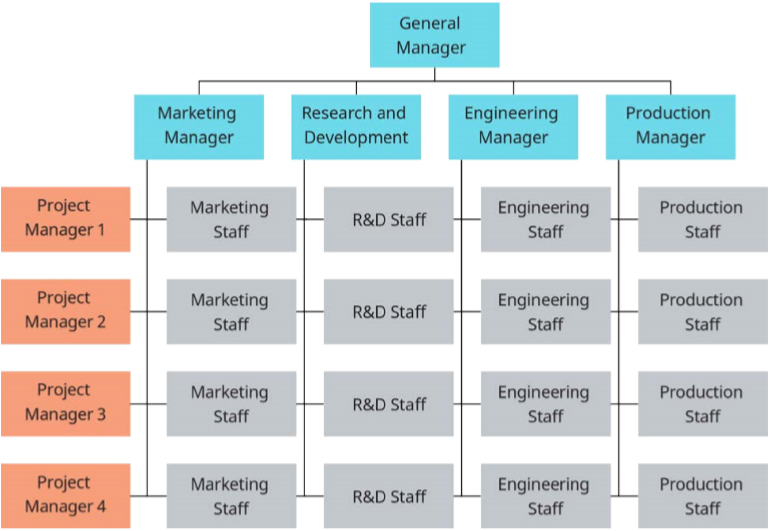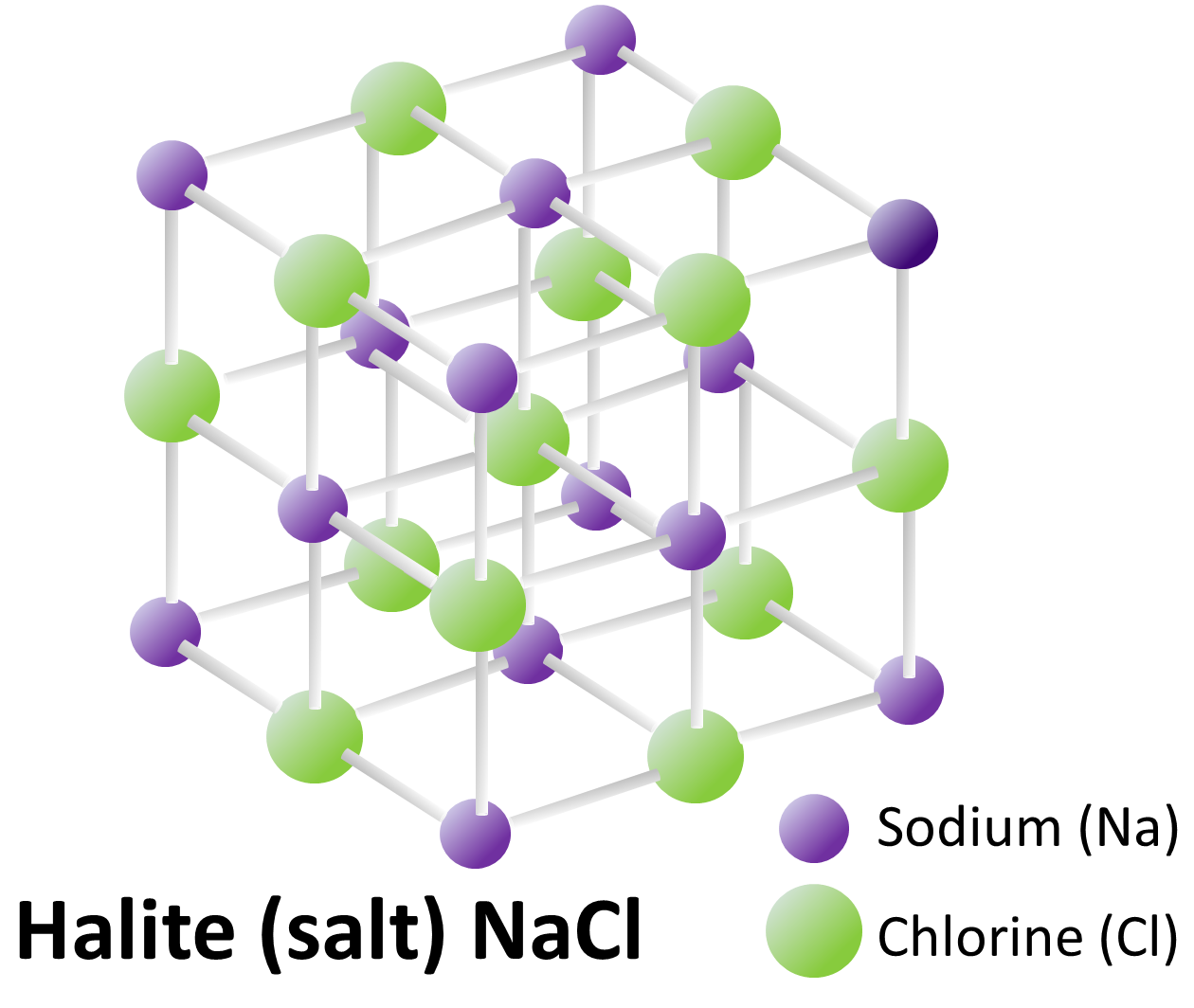Crafting a compelling speech, like a Ted Talk, requires more than just eloquent words. It demands a strategic structure, engaging visuals, and a captivating delivery. This guide provides a comprehensive framework for transforming your ideas into a powerful, audience-resonating presentation.
From crafting a compelling introduction to choosing impactful visuals, this Artikel meticulously details every element of a successful Ted Talk. Learn how to connect with your audience on an emotional level and deliver a memorable speech.
Introduction and Hook

Crafting a compelling introduction is paramount to capturing an audience’s attention and setting the stage for a captivating Ted Talk. A strong opening immediately establishes the relevance of your topic and hooks the listener, prompting them to actively engage with your message. A well-structured introduction fosters a sense of anticipation and curiosity, drawing the audience into the core of your presentation.A successful introduction for a Ted Talk is more than just a pleasant greeting; it’s a carefully designed narrative that lays the groundwork for a profound and impactful message.
The initial few minutes are crucial for establishing credibility, highlighting the topic’s importance, and fostering a connection with the audience. This initial engagement directly influences their perception of the entire presentation.
Compelling Opening Statements
A compelling opening statement serves as the initial hook, immediately grabbing the audience’s attention and setting the tone for the presentation. This opening statement should not only introduce the topic but also create a sense of anticipation and intrigue. For instance, a startling statistic, a thought-provoking question, or a captivating anecdote can effectively achieve this.
Relevance and Resonance
The introduction should clearly establish the topic’s relevance to the audience. This can be achieved by connecting the topic to their personal experiences, aspirations, or current challenges. By demonstrating how the topic directly impacts their lives, the audience is more likely to feel invested in the message. For example, discussing how time management skills can significantly impact professional success resonates deeply with working professionals.
Anecdotes and Statistics
A compelling anecdote or a powerful statistic can significantly enhance the impact of an introduction. Anecdotes offer a personal touch, making the topic relatable and memorable. Statistics provide a data-driven perspective, highlighting the significance and scope of the issue. For example, a statistic revealing the alarming rate of procrastination among students immediately grabs attention and establishes the urgency of the topic.
Creating a Hook
A well-crafted hook is essential for leaving the audience wanting to learn more. This could involve posing a thought-provoking question, presenting a surprising revelation, or introducing a captivating challenge. A strong hook piques curiosity and creates a desire to understand the speaker’s perspective. For instance, a question about the potential impact of artificial intelligence on daily life immediately draws the audience into a discussion about a rapidly evolving subject.
Importance of a Strong Introduction
A strong introduction is crucial in the Ted Talk format for several reasons. It sets the stage for the presentation, establishing a connection with the audience and setting the tone for the message. A compelling introduction immediately grabs attention, making the topic relevant and relatable to the audience. This engagement is essential for fostering a positive reception and ensuring that the audience remains invested in the entire presentation.
A captivating introduction lays the foundation for effective communication and fosters audience engagement. Ultimately, a strong introduction significantly increases the likelihood of a successful and impactful presentation.
Structure and Flow
A compelling Ted Talk isn’t just a collection of ideas; it’s a carefully crafted narrative that captivates and inspires the audience. Understanding the fundamental structure and flow of a typical Ted Talk is crucial for crafting a successful presentation. This section will delve into the essential elements of structure, narrative arc development, and smooth transitions to ensure audience engagement.A typical Ted Talk often follows a structured pattern that blends storytelling with insightful ideas.
The structure typically begins with an introduction that immediately grabs the audience’s attention, followed by a clear articulation of the core message, supported by compelling evidence, and finally, a memorable conclusion that leaves a lasting impact. This structure is not rigid; however, understanding these common elements provides a solid framework for crafting a powerful presentation.
Fundamental Structure of a Ted Talk
The core structure of a Ted Talk typically revolves around a captivating introduction, a clear thesis statement, supporting arguments, and a memorable conclusion. This structure allows for a logical flow of ideas, building towards a concise and impactful message. While the specific format can vary, the essential elements remain consistent.
Crafting a Logical Sequence of Ideas
Developing a logical sequence involves identifying the core message and then structuring the supporting points to build towards that message. Think of this as a carefully crafted argument, progressively leading the audience to a deeper understanding of the topic. The sequence should be easily digestible, allowing the audience to follow the progression of ideas. Each subsequent point should build upon the previous one, gradually strengthening the argument and deepening the message’s impact.
Developing a Ted Talk: A Step-by-Step Approach
To develop a Ted Talk, consider the following steps:
- Identify your core message: What is the single most important idea you want to convey? This should be concise and easily understood.
- Craft a compelling introduction: This is your opportunity to grab the audience’s attention and introduce your topic. A captivating anecdote, a surprising statistic, or a thought-provoking question can be effective.
- Develop supporting arguments: Present evidence and examples to support your core message. These arguments should be logically connected and build upon each other.
- Structure your arguments for clarity: Use a clear and concise language style. Avoid complex jargon and ensure the message is accessible to a broad audience.
- Craft a memorable conclusion: Summarize your key points and leave the audience with a lasting impression. This could be a call to action, a thought-provoking question, or a powerful statement.
Creating a Narrative Arc
A compelling narrative arc engages the audience emotionally and intellectually. The narrative arc typically includes a setup (introduction of the problem), a rising action (building the argument), a climax (presenting the core message), and a resolution (concluding thoughts). The narrative should be relevant to the topic, engaging the audience’s interest and facilitating deeper understanding.
Elements of a Compelling Storyline
A compelling storyline involves a clear beginning, middle, and end. It should resonate with the audience’s values and experiences. Effective stories often incorporate relatable characters, unexpected turns, and a clear message. A strong narrative arc can transform a presentation into an experience, leaving a lasting impact on the audience.
Smooth Transitions Between Points
Smooth transitions are vital for maintaining audience engagement. Transitioning between points should be seamless and logical, ensuring a cohesive flow of ideas. Transitional phrases, such as “building on this point,” or “now, let’s consider,” can effectively guide the audience. Visual aids can also serve as transitional cues, providing a visual link between ideas.
Framework for Effective Storytelling and Audience Engagement
The framework for effective storytelling involves using vivid language, engaging anecdotes, and emotional connections. Relatability is key to ensuring the audience connects with the message. The framework should be structured in a way that maintains the audience’s interest, leading them to a deeper understanding of the core message.
Content Development

Crafting a compelling Ted Talk necessitates meticulous attention to content development. This involves transforming complex ideas into concise, impactful points, ensuring clarity and engagement. A strong core message, effectively communicated through compelling examples and narratives, is crucial for resonating with the audience. This section will delve into strategies for creating impactful and memorable content.
Creating Concise and Impactful Points
Effective Ted Talks rely on succinct, impactful points that resonate with the audience. Avoid overly complex sentences or convoluted arguments. Each point should contribute directly to the overall message and be easily understood. A clear and concise statement, followed by a brief explanation, is often sufficient. The use of strong verbs and active voice enhances the impact and clarity of your points.
Presenting Complex Ideas Simply
Complex ideas can be daunting, but a Ted Talk aims to make them accessible to a wide audience. Breaking down intricate concepts into smaller, digestible components is key. Employ analogies, metaphors, and real-world examples to illustrate the core principles. Visualization techniques, such as diagrams or simple animations, can significantly aid comprehension. Visual aids can serve as valuable tools for conveying intricate concepts, enhancing understanding.
Identifying and Communicating the Core Message
A strong core message is the bedrock of a successful Ted Talk. Identifying this central idea is crucial for ensuring all components of the talk align with a unified theme. This message should be clear, concise, and easily understood. It should resonate with the audience and leave a lasting impression. Consider your audience and tailor your message to their specific interests and needs.
Using Examples and Anecdotes
Examples and anecdotes are invaluable tools for illustrating key concepts and engaging the audience. Personal anecdotes or relatable stories can help establish credibility and connect with the audience on an emotional level. These examples should be brief, impactful, and directly relevant to the point being made. They provide concrete evidence and support the claims made in the talk.
Storytelling for Emotional Connection
Stories are powerful tools for forging an emotional connection with the audience. A well-told story can illustrate complex ideas in a relatable and engaging manner. The narrative should be concise, compelling, and aligned with the core message. Effective storytelling relies on strong characters, compelling conflicts, and clear resolutions. Stories should be used to humanize the message and connect it to the audience’s experiences.
Keeping the Presentation Engaging and Dynamic
Maintaining audience engagement throughout the presentation is crucial for a successful Ted Talk. Vary your delivery, use appropriate pauses, and incorporate visual aids strategically. Humor, when appropriate, can add levity and keep the audience engaged. Transitions between ideas should be smooth and seamless, ensuring a coherent flow. Enthusiasm and passion are essential for keeping the audience captivated.
Ensuring Content Alignment
The content of a Ted Talk should seamlessly align with the overall message. Each point, example, and anecdote should reinforce the central theme and contribute to the overarching narrative. Inconsistencies or diversions from the core message can detract from the overall impact of the presentation. Careful planning and consistent application of the core message are essential.
Visual Aids and Presentation

Visual aids are crucial for a compelling Ted Talk presentation. They serve as powerful tools to enhance understanding, engagement, and memorability. A well-designed visual presentation can transform a complex topic into a digestible and memorable experience for the audience. The choice and implementation of visuals should always be purposeful, supporting the core message, and not detracting from the speaker’s delivery.Effective visual aids, thoughtfully selected and strategically integrated, elevate a presentation beyond a simple recitation of facts.
They foster a deeper connection with the audience, solidifying the message and leaving a lasting impression.
Creating Engaging Visuals
Visuals should be more than just decorative elements. They should actively contribute to the overall message. A well-structured visual aid strategy is essential. This involves a thoughtful process, ensuring clarity, consistency, and a seamless integration with the speech. A template for creating engaging visuals should incorporate these elements.
- Simplicity and Clarity: Visuals should be concise and easy to understand at a glance. Avoid cluttering slides with excessive text or complex graphics. Use clear, concise typography and a limited color palette.
- Consistency in Design: Maintain a consistent design style across all slides. This includes using the same fonts, colors, and layout elements. A unified look strengthens the presentation’s professionalism and helps the audience focus on the message.
- Strategic Use of Imagery: High-quality images, charts, and graphs can effectively illustrate points and make them more memorable. Choose images that are relevant to the topic and are high resolution to avoid pixelation.
- Thoughtful Typography: Select fonts that are easy to read, both on screen and from a distance. Use appropriate font sizes and ensure sufficient contrast between text and background colors.
Selecting Appropriate Visuals
The selection of visuals should directly correlate with the speech’s core message. Appropriate visuals enhance understanding and make the speech more memorable.
- Relevance to the Topic: Choose visuals that directly support the key points of the speech. Avoid using visuals that are unrelated or tangential to the discussion. This ensures a clear connection between the message and the supporting materials.
- Supporting the Narrative: Visuals should complement and amplify the speaker’s points. They should illustrate, exemplify, or reinforce the message, not simply restate it. An effective visual tells a story and contributes to the flow of the speech.
- Clarity and Conciseness: Ensure that visuals are clear and concise, easily understandable by the audience. Avoid overly complex graphics or intricate details that might distract from the speech’s core message.
Designing a Visually Appealing Presentation
Visual appeal is essential for engaging an audience. A visually appealing presentation does not distract from the content but enhances the overall experience.
- Color Scheme and Palette: Use a color scheme that is visually appealing and complements the theme of the speech. A consistent color palette creates a unified and professional look. Choose colors that are easily readable and do not strain the eyes. For example, a light blue background with dark text creates a calm and focused presentation.
- Layout and Spacing: Maintain a clear and balanced layout on each slide. Use appropriate spacing between elements to avoid a cluttered appearance. Use white space strategically to draw attention to key information.
- Font Choice and Size: Select fonts that are easy to read and complement the overall design. Ensure that the font size is large enough to be clearly visible from a distance. Avoid using too many different fonts, maintaining a consistent style.
Incorporating Media for Enhanced Understanding
Images, graphs, and other media can significantly enhance audience understanding.
- Images and Photographs: High-quality images and photographs can effectively illustrate concepts and provide visual context. Images can help to convey complex ideas more simply and memorably.
- Charts and Graphs: Charts and graphs can effectively present data and trends. They help the audience to quickly grasp complex information. A well-designed bar graph, for instance, can easily show the increase in sales over time.
- Videos and Animations: Short videos and animations can provide dynamic illustrations and engaging visual experiences. They can effectively showcase processes or concepts. For example, a short animated video can clearly explain the mechanics of a scientific process.
Examples of Effective Visual Aids in Ted Talks
Numerous Ted Talks utilize effective visual aids to reinforce the message and enhance the overall presentation. Many speakers successfully employ high-quality imagery, graphs, and animations to clarify points and improve audience engagement.
Importance of Visual Aids in Reinforcing the Message
Visual aids play a critical role in strengthening the speech’s message. They reinforce key points and make them more memorable for the audience.
Role of Visual Elements in Creating a Memorable Presentation
Visual elements are fundamental in crafting a memorable presentation. They engage the audience, enhance understanding, and leave a lasting impression. A compelling presentation is not just about words but also about the visuals that accompany them.
Delivery and Engagement
Delivering a compelling presentation goes beyond just crafting excellent content. Effective delivery techniques are crucial for engaging the audience and ensuring your message resonates. A captivating presentation requires careful consideration of voice modulation, body language, and audience interaction. This section will delve into practical strategies for creating a dynamic and memorable speaking experience.Engaging an audience requires more than just well-structured content; it necessitates a dynamic delivery that connects with the audience on a personal level.
This is achieved through a thoughtful combination of techniques that foster audience attention and participation.
Effective Vocal Delivery
A strong voice is vital for conveying passion and confidence. Vocal variety, including varying pitch, pace, and volume, keeps the audience engaged. Varying the pace allows for emphasis on key points, while adjustments in volume can create dramatic impact. Practice projecting your voice with clarity and resonance, avoiding monotone delivery.
Maintaining Eye Contact and Connection
Making genuine eye contact with individuals in the audience fosters a sense of connection and builds trust. Scanning the room, engaging with different parts of the audience, and maintaining consistent eye contact with individual listeners creates a personal and relatable experience. This technique creates a sense of intimacy and ensures that every member of the audience feels seen and valued.
Utilizing Body Language
Body language plays a significant role in delivering a compelling presentation. Maintain an open posture, use natural gestures, and ensure that your movements complement your message. Avoid fidgeting, pacing excessively, or appearing stiff. Appropriate use of gestures can emphasize points, enhance engagement, and highlight key messages. The use of natural and expressive gestures can effectively complement the spoken word, enhancing the overall impact of the presentation.
Managing Nervousness and Maintaining Composure
Nervousness is a common experience before presentations. Preparation is key; practice your presentation beforehand to build confidence. Deep breathing exercises and positive self-talk can help calm nerves and maintain composure. Visualize a successful presentation, focus on delivering your message clearly, and remind yourself of your preparation. Remembering your core message and your practiced delivery methods can help to overcome nervousness.
Creating a Dynamic and Engaging Presentation
Dynamic presentations often involve elements of spontaneity and audience interaction. Using rhetorical questions, storytelling, and humor (appropriately) can make the presentation more engaging and memorable. Incorporate anecdotes and real-life examples to illustrate your points and connect with the audience on a deeper level. Varying the tone and style of your presentation can keep the audience engaged and prevent monotony.
Maintaining Audience Attention
Maintaining audience attention throughout the presentation requires a conscious effort to keep them interested. Use visual aids strategically, vary your delivery style, and incorporate interactive elements where appropriate. Engage the audience with rhetorical questions or thought-provoking statements. Ensure a smooth flow and transition between sections to maintain the audience’s focus.
The Role of Pauses and Rhetorical Questions
Strategic pauses can create dramatic effect, allowing the audience to process information and anticipate the next point. They can also emphasize key phrases and create anticipation. Using rhetorical questions encourages audience participation and engagement. Well-placed rhetorical questions stimulate thought and encourage the audience to actively consider the presented information.
Practice and Refinement

Effective presentation delivery hinges on meticulous practice and refinement. This crucial stage allows speakers to fine-tune their message, identify areas needing improvement, and ultimately, connect with their audience on a deeper level. Thorough preparation during this phase leads to a more polished and impactful presentation.By consistently practicing and refining the presentation, speakers gain confidence and control, allowing them to adapt to unexpected situations and deliver a more engaging performance.
Careful consideration of audience dynamics and a commitment to continuous improvement are key to achieving this goal.
Developing a Practice Routine
A structured practice routine is essential for maximizing the impact of a presentation. Consistency in practicing allows speakers to internalize the message and refine their delivery style. Regular practice sessions help identify areas needing improvement, allowing for adjustments to be made before the actual presentation.
- Initial Dry Runs: Begin with a complete run-through of the presentation in a quiet environment. Focus on clarity, pacing, and natural flow. Record yourself if possible for objective evaluation. Recordings offer a unique opportunity for self-assessment.
- Rehearsal with Feedback: Invite trusted colleagues, mentors, or friends to provide constructive criticism. Actively solicit feedback on content clarity, delivery style, and overall impact. Seek insights into how the presentation could better resonate with the intended audience.
- Simulate the Environment: Practice in a setting that mirrors the actual presentation environment, including the available technology and any potential distractions. This will help you anticipate potential challenges and refine your response to them.
- Time Management: Time yourself rigorously during practice sessions to ensure the presentation stays within the allotted timeframe. Identify and address any sections that exceed the allocated time.
Refining Delivery for Maximum Impact
Refining the delivery for maximum impact involves focusing on specific aspects of the presentation. Careful attention to pacing, tone, and body language can dramatically enhance the presentation’s impact.
- Pacing and Tone: Varying the pace and tone of your voice can maintain audience engagement. Speak with appropriate energy and enthusiasm to communicate passion and interest in the subject matter. Consider incorporating pauses to allow the audience to absorb information and reflect on key points.
- Body Language: Maintain appropriate eye contact with the audience, use natural gestures, and maintain a posture that conveys confidence and professionalism. Avoid distracting mannerisms or fidgeting that could detract from the message.
- Vocal Projection: Ensure your voice is clear and audible throughout the presentation. Adjust volume as needed to ensure that everyone in the audience can hear you. Practice vocal variety to maintain engagement.
Addressing Areas for Improvement
Identifying and addressing areas for improvement is crucial for a successful presentation. Constructive feedback from various sources, coupled with self-reflection, is key.
- Seeking Constructive Criticism: Actively solicit feedback from trusted individuals, focusing on specific aspects of the presentation. Ask for suggestions on how to improve clarity, engagement, and overall impact. A combination of external and self-evaluation is ideal.
- Analyzing Recorded Practices: Review recordings of practice sessions to identify areas needing improvement. Observe your body language, vocal delivery, and content flow to pinpoint areas for enhancement. Recordings offer a unique opportunity for self-assessment.
- Iterative Refinement: Use the feedback and analysis to make necessary revisions to the presentation. Rehearse these changes thoroughly and seek further feedback to ensure that improvements are effective.
Incorporating Audience Interaction
Engaging the audience can make a presentation more dynamic and memorable. Incorporating interactive elements can keep the audience actively involved in the discussion.
- Polls and Questions: Incorporate short polls or questions to gauge audience understanding and interest. Use tools to quickly collect responses and integrate the feedback into the presentation.
- Q&A Sessions: Schedule dedicated time for questions and answers at the end of the presentation. This allows the audience to clarify doubts and engage in a dialogue.
- Open Discussion: Encourage open discussion by posing thought-provoking questions or inviting audience participation throughout the presentation. This promotes a more collaborative learning environment.
Tailoring the Presentation to the Audience
Adapting the presentation to the specific audience ensures the message resonates effectively. Understanding the audience’s background and expectations is key.
- Audience Research: Research the audience to understand their knowledge level, interests, and expectations. Consider their background, demographics, and potential biases.
- Adapting Content: Adjust the content and delivery style to cater to the audience’s specific needs and interests. Use language and examples relevant to their background.
- Interactive Elements: Incorporate interactive elements tailored to the audience. Select elements that resonate with their preferences, such as polls, Q&A, or open discussion.
Example Structures
A successful TED Talk hinges on a clear structure that captivates the audience and delivers a compelling message. Understanding various structures can greatly enhance the impact of your presentation, allowing you to tailor your approach to the specific topic and desired outcome. Different structures are suitable for different types of presentations.
Successful TED Talk Structure
This table Artikels a typical structure for a compelling TED Talk, emphasizing key elements for maximum audience engagement.
| Stage | Description |
|---|---|
| Hook | Immediately grab the audience’s attention with a compelling anecdote, surprising statistic, or thought-provoking question. |
| Context/Problem Statement | Clearly define the issue or challenge that the talk addresses, highlighting its significance and impact. |
| Solution/Idea | Present your key idea or solution to the problem, providing clear and concise explanations. |
| Storytelling/Examples | Illustrate your idea with compelling stories, anecdotes, or examples to make the concept relatable and memorable. |
| Call to Action | Encourage the audience to take specific actions or reflect on the presented ideas. |
Environmental Issues Presentation Structure
A presentation on environmental issues should be structured to clearly communicate the problem, highlight potential solutions, and inspire action.
- Introduction (Hook): Start with a striking statistic about environmental damage or a compelling image of a natural disaster. This should instantly connect the audience to the topic.
- Problem Statement: Detail the environmental issue, including its causes, effects, and scope. Use clear, concise language to make the problem easily understandable.
- Proposed Solutions: Present realistic and actionable solutions, emphasizing their potential impact and feasibility. Include examples of successful implementations, if applicable.
- Call to Action: Conclude with a strong call to action, encouraging the audience to take concrete steps to address the issue, whether it’s reducing their carbon footprint or advocating for policy changes.
Personal Development Presentation Structure
A presentation on personal development should focus on practical strategies and inspiring examples.
- Introduction (Hook): Start with a relatable personal story or anecdote illustrating a struggle overcome through personal development. This will help the audience connect with the topic.
- Understanding the Challenge: Define the specific personal development challenge and its impact on individuals. Present relevant research or statistics to highlight the importance of the topic.
- Practical Strategies: Artikel actionable strategies and techniques for overcoming the challenge. Include specific examples and step-by-step instructions to aid the audience.
- Inspirational Examples: Share inspiring stories of individuals who have successfully navigated similar challenges. These stories should reinforce the practical strategies and demonstrate the potential for success.
- Conclusion/Call to Action: Encourage the audience to embrace their own personal development journey, providing resources or actionable steps they can take immediately.
Technological Innovation Presentation Structure
This presentation structure focuses on explaining technological advancements and their potential impact.
- Introduction (Hook): Start with a fascinating demonstration of a recent technological advancement or a surprising statistic about its growth. This should capture the audience’s attention.
- Current State of Innovation: Explain the current technological landscape, highlighting recent breakthroughs and key trends. Use relevant data to show the scope of innovation.
- Future Implications: Explore the potential future impact of this technology, addressing both positive and negative implications. Use examples of how this technology is already shaping industries or lives.
- Conclusion: Offer a thought-provoking reflection on the ethical considerations or future possibilities of this innovation. Provide a call to action, encouraging further exploration or engagement.
Visual Aids and Content Effectiveness
This table illustrates the effective use of visuals to enhance content understanding and audience engagement.
| Visual Aid | Content Enhancement | Example |
|---|---|---|
| Infographics | Compressing complex data into easily digestible visuals | Visual representation of global warming trends |
| Charts/Graphs | Displaying statistical data in a clear and concise format | Graph showcasing the rise in renewable energy adoption |
| Images/Photographs | Illustrating key concepts and providing context | Pictures of affected communities due to environmental issues |
Opening Hooks Effectiveness
This table Artikels various opening hook types and their potential effectiveness.
| Hook Type | Description | Effectiveness |
|---|---|---|
| Startling Statistic | Present a surprising statistic to immediately grab attention | High |
| Personal Anecdote | Share a relevant personal story to connect with the audience | Medium to High |
| Thought-Provoking Question | Pose a question that sparks curiosity and reflection | Medium |
| Rhetorical Question | Pose a question to which the audience is expected to reflect silently | Medium to High |
Final Wrap-Up

In conclusion, structuring a speech like a Ted Talk is a journey of crafting a captivating narrative. This comprehensive guide, outlining the essential elements from introduction to delivery, empowers you to create a powerful and memorable presentation. By mastering the techniques discussed, you’ll not only communicate your message effectively but also leave a lasting impression on your audience.